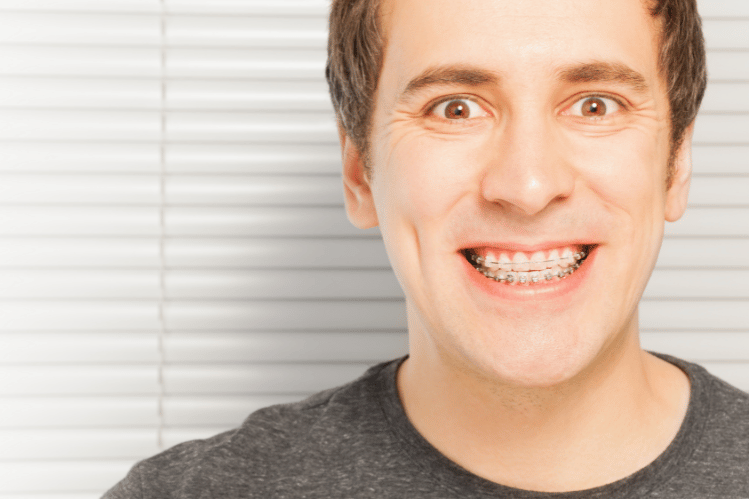
A beautiful smile not only enhances our appearance but also plays a crucial role in our overall oral health. Crooked or misaligned teeth can often lead to functional issues such as difficulty in chewing and speaking, as well as increased susceptibility to dental problems. Thankfully, advancements in orthodontic treatments have made it easier than ever to achieve straighter teeth and improved dental function. In this blog post, we will explore the benefits of clear aligners in straightening teeth and how they can positively impact chewing efficiency.
Understanding the Importance of Proper Tooth Alignment:
Proper tooth alignment goes beyond aesthetic appeal. It plays a significant role in our ability to bite, chew, and speak effectively. When teeth are misaligned, they can cause an uneven distribution of forces during chewing, leading to excessive wear and tear on certain teeth. This can result in various issues, including tooth sensitivity, jaw pain, and an increased risk of dental problems like cavities and gum disease.
Clear Aligners: A Modern Solution for Straightening Teeth:
Clear aligners, such as Invisalign®, have revolutionized the field of orthodontics by providing a discreet and comfortable alternative to traditional metal braces. These custom-made, transparent trays are designed to gradually move the teeth into their proper positions, resulting in a straighter smile. Unlike traditional braces, clear aligners are removable, making oral hygiene easier and allowing for better chewing efficiency.
Improved Chewing Efficiency with Clear Aligners:
Correct Occlusal Alignment: Clear aligners work to align the upper and lower jaws properly, allowing for optimal occlusal alignment. This means that when you bite down, your teeth meet correctly, ensuring even distribution of chewing forces. With improved occlusion, you can chew your food more efficiently, reducing the risk of jaw discomfort or TMJ (Temporomandibular Joint) disorders.
Enhanced Mastication: Misaligned teeth can lead to difficulties in properly chewing food, resulting in inadequate breakdown of food particles. This can place additional stress on the digestive system and affect nutrient absorption. By aligning the teeth, clear aligners help improve mastication, allowing for more effective grinding and chewing of food, which aids in the digestion process.
Balanced Bite Force: Clear aligners help achieve a balanced distribution of bite force among all teeth. When teeth are aligned correctly, the pressure exerted during chewing is evenly distributed, minimizing excessive strain on certain teeth. This helps prevent tooth wear and reduces the likelihood of dental fractures or cracks.
Oral Hygiene Benefits: Clear aligners are removable, allowing for easy maintenance of oral hygiene. Unlike traditional braces, which can trap food particles and make brushing and flossing challenging, clear aligners can be taken out for regular cleaning. Maintaining good oral hygiene is essential for healthy gums and teeth, further enhancing chewing efficiency.
Conclusion
Clear aligners have transformed the way we approach teeth straightening, providing an aesthetically pleasing and functional solution for many orthodontic issues. By addressing misalignment, these virtually invisible aligners not only enhance our smiles but also improve our ability to chew efficiently. Straighter teeth with balanced bite forces contribute to better oral health, reducing the risk of dental problems and improving overall well-being. If you're considering orthodontic treatment, consult with an experienced dentist or orthodontist to determine if clear aligners are suitable for you and take a step toward improved chewing efficiency and oral health.
FAQs
How do clear aligners straighten teeth?
Clear aligners use a series of custom-made, transparent trays that gradually shift the teeth into their proper positions. Each tray is worn for a specified period, usually about two weeks, before being replaced with the next tray in the series. Over time, this controlled movement helps align the teeth and correct any misalignments.
Can clear aligners improve chewing efficiency?
Yes, clear aligners can improve chewing efficiency. By properly aligning the teeth, they help achieve optimal occlusion and a balanced bite force. This ensures that the teeth meet correctly when biting down, resulting in even distribution of chewing forces and more efficient mastication.
Will wearing clear aligners affect my ability to chew?
Wearing clear aligners may initially require an adjustment period as you get used to the trays in your mouth. However, they are designed to fit comfortably and should not significantly impact your ability to chew. It is normal to experience mild discomfort or soreness during the initial days of each new aligner tray, but this typically subsides as your teeth adjust to the treatment.
Can I eat normally with clear aligners?
Clear aligners are removable, which means you can take them out when eating. This allows you to enjoy your meals without any dietary restrictions commonly associated with traditional braces. However, it's important to remember to wear the aligners for the recommended 20-22 hours per day to ensure the treatment progresses as planned.

